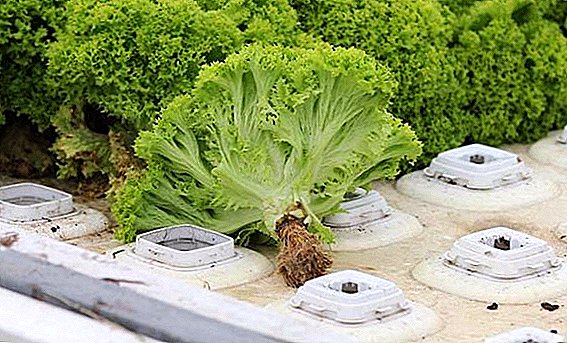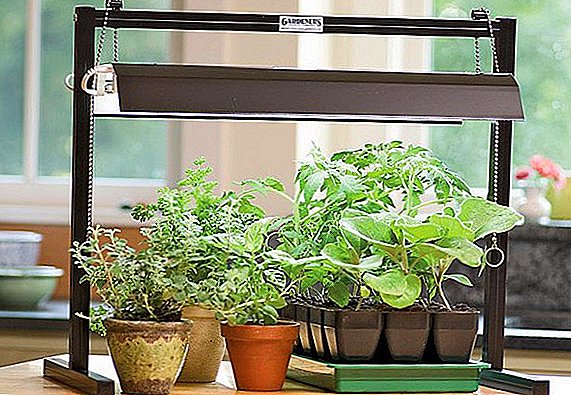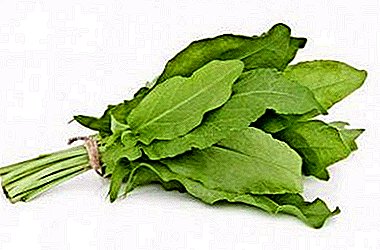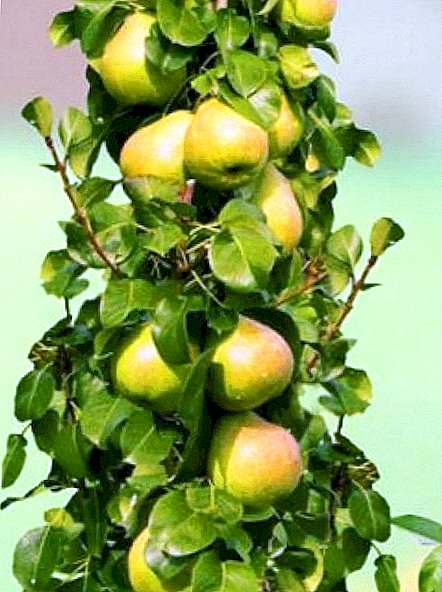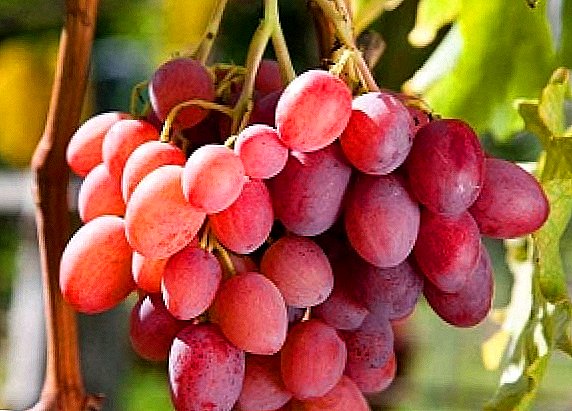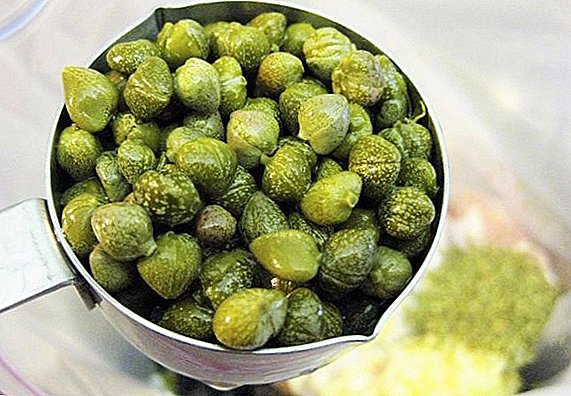 Capers can now be found in many supermarkets, but not everyone is aware of their use in many areas of life. In our article we will talk about what capers are, about their beneficial properties, as well as about the peculiarities of growing this exotic plant at home.
Capers can now be found in many supermarkets, but not everyone is aware of their use in many areas of life. In our article we will talk about what capers are, about their beneficial properties, as well as about the peculiarities of growing this exotic plant at home.
History reference
Capers are known for a long time, they were used as food and means of treatment in ancient Rome and Greece. In Africa and Asia, they were used as a spice, and in Uzbekistan oil was made from the seeds of this plant. In the Caucasus, capers are considered a traditional edible plant, it is eaten fresh, pickled, salted and consumed as a seasoning.
The ancient healers also used the beneficial properties of this plant. With it, wounds and cuts were treated, it was used as an analgesic, diuretic and choleretic agent.
Botanical description and distribution
Prickly capers - creeping perennial shrub, its stems grow to one and a half meters, and the root can reach 12 meters. The leaves are rounded, pointed at the top and with small hairs on the underside.  The flowering period is May-June. Flowers single large size, initially their color is white, but blooming, get a pinkish tint.
The flowering period is May-June. Flowers single large size, initially their color is white, but blooming, get a pinkish tint.
The fruits of this shrub are green boxes, opening on several leaves. Scarlet flesh. Inside the bolls are seeds of gray-brown color. The length of the fruit does not exceed 2 centimeters, and the size in diameter is about 1 centimeter. Eat unopened buds of the plant.
Did you know? In addition to capers growing in the wild, there are varietal crops, which are produced in Spain, Italy and France.
This thorny shrub is widespread in North Africa, India, Crimea, as well as in arid regions of the Mediterranean and the Caucasus.
Chemical composition
This exotic plant contains a lot of essential oils, enzymes and dietary fibers, including pectin, which promotes the establishment of metabolism and excretion of toxins and toxins from the body.  It is also a storehouse of vitamins and minerals that the body needs for normal functioning. Capers contain vitamins A, B, C, E, K. Calcium, phosphorus, iron, zinc, magnesium, sodium, potassium, and iodine can be distinguished from minerals.
It is also a storehouse of vitamins and minerals that the body needs for normal functioning. Capers contain vitamins A, B, C, E, K. Calcium, phosphorus, iron, zinc, magnesium, sodium, potassium, and iodine can be distinguished from minerals.
Energy value and calorie
Although this plant has a lot of nutrients, it is low-calorie. 100 grams of fresh capers contain only 14 kilocalories, and canned - 23 kilocalories.
The minimum number of calories is also found in tomatoes, carrots, green beans, fresh cucumbers, turnips, strawberries, Brussels sprouts, shallots.
There are 2.36 grams of proteins, 0.86 grams of fats and 4.89 grams of carbohydrates per 100 grams of product.
Beneficial features
Capers have many useful properties, among which the main ones are:
- Strengthening the walls of blood vessels. Fruits are excellent as a prophylactic agent for cardiovascular diseases.
- Enhance immunity. This is due to the high content of ascorbic acid in the plant.
- Accelerates metabolic processes. You can use them to reduce weight.
- It has anti-inflammatory and wound healing properties.
- Positive effect on blood quality. It folds well and reduces the likelihood of hemorrhage.
- It has an analgesic effect.
- Improving digestion and bowel cleansing. This is due to the high content of pectin and fiber in the fruits of the plant.
- It has antioxidant properties. Eating capers slows down the aging process and helps in the fight against cancer cells.
- It helps with diseases of the thyroid gland.

Cooking Application
Fresh buds of the exotic shrub taste bitter, so for eating spend some actions. After collection, they are withered in the open air and kept in saline solution for 3 months, adding vinegar or olive oil. They are also marinated or sprinkled with salt in glass containers.
Important! In order to remove excess salt from capers when eaten, you must first soak them in a bowl of water or scald.Fruits have a savory sticky taste, slightly tart and sour. To taste, they vaguely resemble mustard and black pepper.
Among the products that combine well with them are meat, seafood, fish, vegetable salads, eggs, greens, pasta, cheese, olive and butter.
Adding a small amount of capers to a soup, stew, or salad will make the taste unusual and give the dish a touch of exoticism.
Learn how exotic plants such as momordica, okra, and papaya are used in cooking.
 If capers are not available, and this ingredient is declared in the dish, then you can get out of this situation by replacing them with another product. In the classic salad recipe of Olivier, the fruit of the plant has long been replaced by salted cucumbers. For meat dishes and fish dishes, capers will be replaced by olives that are similar in taste to capers. In salads a marinated pods of naturtia will become a substitute for an exotic plant.
If capers are not available, and this ingredient is declared in the dish, then you can get out of this situation by replacing them with another product. In the classic salad recipe of Olivier, the fruit of the plant has long been replaced by salted cucumbers. For meat dishes and fish dishes, capers will be replaced by olives that are similar in taste to capers. In salads a marinated pods of naturtia will become a substitute for an exotic plant.
Nivyanik flowers, more precisely, buds, pickled and used as capers in soups, borscht and other dishes.
Harmful properties and contraindications
Despite the large number of useful qualities, in some cases, capers are contraindicated for use:
- Due to the high concentration of sodium in their composition, they are an allergen, so it is not recommended to use them for pregnant women and people with individual intolerance to sodium.
- This exotic plant is contraindicated in hypertension, increased sexual excitability and constipation, as it can cause exacerbations of these diseases.
- Eating large amounts of these fruits as food can cause nausea and flatulence.

Growing capers at home
Home cultivation of this plant - a rare phenomenon, but for lovers of the exotic in their garden will be useful some tips.
Lighting
It prefers direct sunlight and good lighting.
Temperature conditions
The plant loves heat. It is optimal that the thermometer does not fall below + 5-10 ° C in winter. The shrub can withstand temperatures as low as -8 ° C. It is recommended in the fall to transfer it to a bright cool room (5-15 ° C). In such conditions, there is a complete or partial dropping of leaves.
Watering
The bush does not need frequent watering, it can use moisture that is in the air. 
Important! It is not recommended to flood the plant with water, this will prevent the production of oxygen by the roots.
Soil and fertilizer
Sowing seeds should be done from March to May. They are quite unpretentious, you can even grow this shrub on sandy soils unsuitable for other crops. They are sown in a wide-row way (70cm) with a distance of 40-50 cm between the bushes. It is recommended to fertilize the shrub twice a year: in May and July. To do this, take 5-6 grams of nitrogen granules with water.
Transfer
Capers grow rather slowly, in the first year they do not bear fruit, but only give a large number of leaves. In this regard, they can live in pots up to 16 cm in diameter for a long time.
However, despite its slow growth, these are powerful plants whose roots can reach 12 meters in length. Therefore, grown capers need to be transplanted to a greenhouse or open ground. 
Breeding
This shrub propagates by seed, for which the buds must open and the fruits ripen. But in the absence of a shrub buds, you can multiply its layering.
Diseases and parasites
It is necessary to protect young saplings from fungal infections and pests, well ventilate the room and spray it with a fungicide.
Find out what fungicides are used to combat plant diseases.
Aphids and slugs may appear on the capers. To combat them, you must take the following measures:
- wash them off the plant with a stream of water;
- wipe the leaves with soapy water;
- process the shrub with a fungicide.
 These procedures should be carried out before the complete disappearance of pests.
These procedures should be carried out before the complete disappearance of pests.Did you know? In Greek cuisine, they use not only the fruits of capers, but also the leaves of this shrub: they are boiled and pickled, and in dry form they are used to ferment cheeses.Although capers are considered elements of the Mediterranean cuisine, they can take their place in our diet. Due to its composition and composition rich in vitamins and microelements, they can be used for food with health benefits. And knowing all the details of growing and care, you can admire this exotic plant in your garden.


